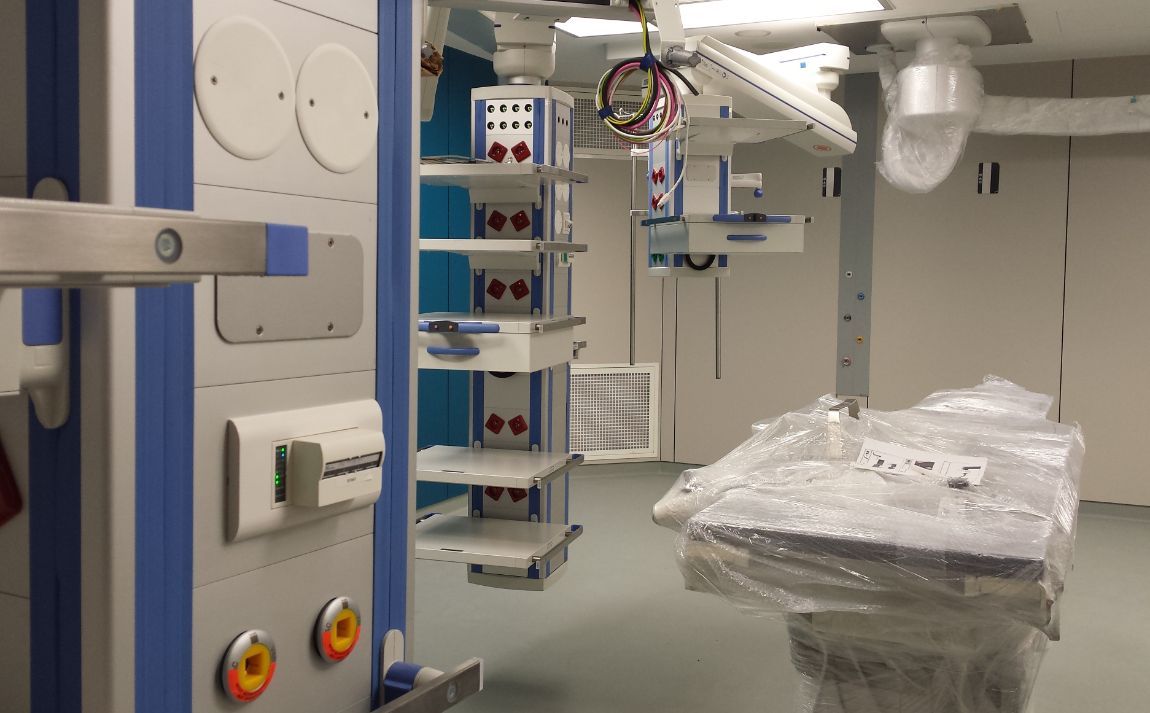- About Aginode
- Data Networks
- Telecom Infrastruktur
- Produkte
-
Ressourcen
- Ressourcen
- Documentation
- Blog
-
Case Studies
- Übersicht
- Innoasis development in Norway
- Eemsdelta Campus
- Hotelschool The Hague
- Emergency covid hospital, Hong Kong
- Société du Grand Paris
- Centrin Datacentres
- Airbus
- Athens Historic City Hall
- Pinewood Studios
- Goethe University Frankfurt
- Denmark New University Hospital
- University of Toulouse
- CHM Maubeuge: a model for future-ready hospitals
- Webinars
- Software Tools
- Warranty
- Newsroom
- Suchen
- Kontaktieren Sie uns
- Vergleichen
- Anmelden
Healthcare
The Hospital of the Future


Fibre To The Office (FTTO) offers a flexible and digital infrastructure enabling you to build the hospital of the future!
Today’s challenges for Hospitals
Around the world, populations are ageing, and more and more people are living with chronic diseases. As a result, the pressure on healthcare providers continues to grow. New advanced therapies improve care and clinical outcomes, but also place greater demands on hospital technology and IT. At the same time, healthcare budgets are constrained, forcing hospitals to find new ways of providing more care,with fewer resources. The challenge for hospitals today is to continuously adapt to new healthcare services, data-intensive technologies and increasing patient volumes. It is essential that your IT-network can support these evolutions. With LANactive, Nexans can help you to do just that - build a flexible digital infrastructure, positioning you to meet the challenges of today and tomorrow.
Choosing the right network infrastructure for your hospital is key!
Speaking to customers all over Europe, we can gather some general trends affecting decisions on what network infrastructure to use. While we see a growing trend towards building new ‘super hospitals’ in the Nordics, Germany, for example, presents a different picture, with many smaller hospitals across the country. (Some 2000 to be precise. putting Germany in the lead in the European ranking when looking at numbers alone.) This distinction can definitely influence the choice of network infrastructure. Fibre To The Office (FTTO) can be a real game changer when it comes to new builds. This is especially true for huge campus environments, like the ‘super hospitals’, that can make you feel as if you’re in a city with its own post code. Although fibre can bring vast benefits to existing buildings and refurbishments, many reconstruction and building extensions rely on an existing copper network infrastructure. Although Nexans LAN Systems can successfully serve both settings, this blog focuses on the advantages of fibre only.
How can your IT network support innovations in healthcare and align with budget constraints?
FTTO combines passive fibre cabling and active switches to provide Gigabit Ethernet services from a central core switch to a FTTO switch and from there to end user devices. FTTO eliminates the need for floor distributors, separate fibre backbone, active equipment, patch panels and racks, as well as large volumes of horizontal copper cabling. A significant advantage in an environment where every square meter counts and space for patients is most valuable. LANactive can easily help realise considerable savings across different areas.
These savings are the result of the excellent performance and the simplicity of the concept, which reduces complexity, enabling faster and easier rollout, maintenance and expansion. In addition, the scalability of the system allows you to expand as you grow, making sure expenditure is always perfectly in line with current requirements.
Kategorien
Unsere Websites
Wählen Sie Ihr Land aus, um unsere Produkte und Lösungen zu finden
-
Africa
- Africa
- Ghana
- Ivory Coast
- Morocco
- North West Africa
- Americas
- Asia
- Europe
- Oceania
